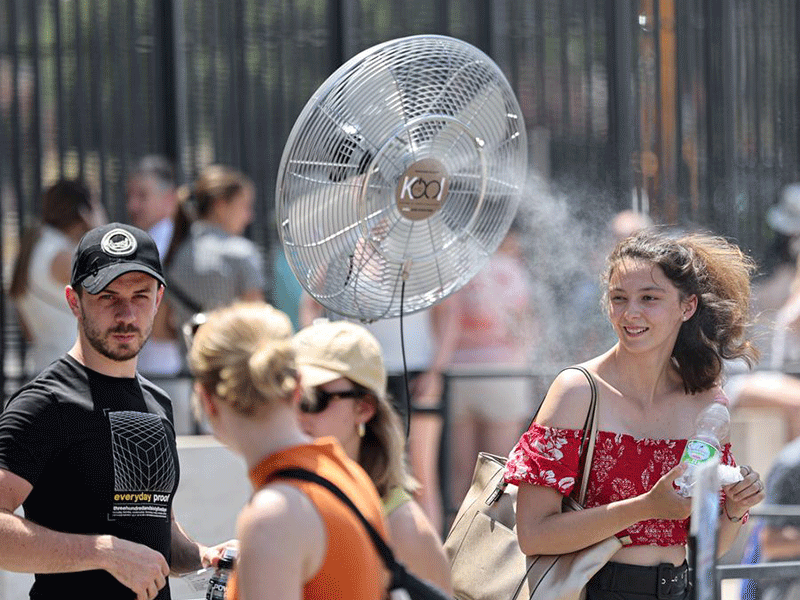 |
Tourists cool off in front of a fan near the Colosseum in Rome, Italy. --Photo Xinhua |
Extreme heatwaves underscore climate urgency, demand action
LONDON (Xinhua) -- Over the past few weeks, heatwaves have hit several regions of the Northern Hemisphere, including parts of North America, Europe, and eastern Asia.
As the Northern Hemisphere endures a summer of unprecedented heat, experts warn that these extreme events are not isolated anomalies, but stark evidence of accelerating climate change.
From Europe to North America and Asia, the impacts are straining societies, economies, and ecosystems, prompting urgent calls for both immediate adaptation and long-term mitigation.
“These are separate events, not a single heatwave event sweeping across the Northern Hemisphere,” said Julien Nicolas, senior scientist at the Copernicus Climate Change Service. “Affected regions are often separated by areas with colder-than-average conditions.”
Despite their geographic separation, these events share a common underlying cause - human-induced climate change. Scientists have widely agreed that the persistent rise in greenhouse gas emissions since the Industrial Revolution is the primary driver of this year’s intense heatwaves.
The still-unbroken trend of rising temperatures due to anthropogenic greenhouse gases has led to record-high sea surface temperatures, further warming the lower atmosphere, Andreas Walter, spokesperson for the German Meteorological Service, has told Xinhua.
Heatwaves are often triggered and sustained by stationary high-pressure systems, sometimes referred to as “heat domes”. These systems trap hot air near the surface and block the formation of cooling clouds and precipitation, leading to prolonged periods of extreme heat, Nicolas explained.
In the United Kingdom, a persistent high-pressure zone has led to parched soils and rising surface temperatures, intensifying the heatwave’s impact.
Another contributing factor is the transition from El Nino to La Nina, which can weaken the West African monsoon and shift hot tropical air northward into Europe. This process supports the persistence of high-pressure systems and prolongs heat and drought conditions.
In the United States, heatwaves are the deadliest form of extreme weather. The current wave is particularly concerning, as it marks the first of the season yet brings temperatures more typical of midsummer, not June. Affecting around 150 million people from Wisconsin to Washington DC, this event bears all the hallmarks of human-induced climate change.
Simultaneously, Europe is experiencing similarly searing temperatures, also intensified by global warming. In Slovenia, average temperatures there have risen by about two degrees Celsius since 1961, doubling the global average and making heatwaves both more frequent and more severe.
Aemet, Spain’s national weather agency, has issued a special warning, forecasting highs of up to 42 degrees Celsius in the country’s southern regions in the coming days. In neighbouring Portugal, around two-thirds of the country will be placed under high alert on Sunday due to extreme temperatures and the risk of wildfires. Lisbon could see highs of 42 degrees Celsius.
In Italy, where cities such as Naples and Palermo are bracing for 39 degrees Celsius heat, the regions of Sicily and Liguria have introduced bans on outdoor work during the hottest parts of the day.
According to the World Meteorological Organisation, Asia is warming at nearly twice the global average. This rapid warming has fueled a series of record-breaking and unusually early heatwaves in 2025.
(Latest Update July 1, 2025)
|